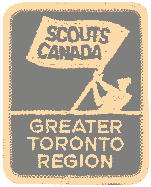
www.gtrsi.com
 |
www.gtrsi.com |
 |
Capturing panoramic vistas
Zip 'em up!
Camera batteries
Lightweight tarp
Hiking staffs
Blue jeans
Prescription drugs
Internal pack disorganized?
Sit-upons
|
Disclaimer: Anything posted to this Home Page
are the opinions of the individuals who posted them and are not the views of Scouts Canada. |